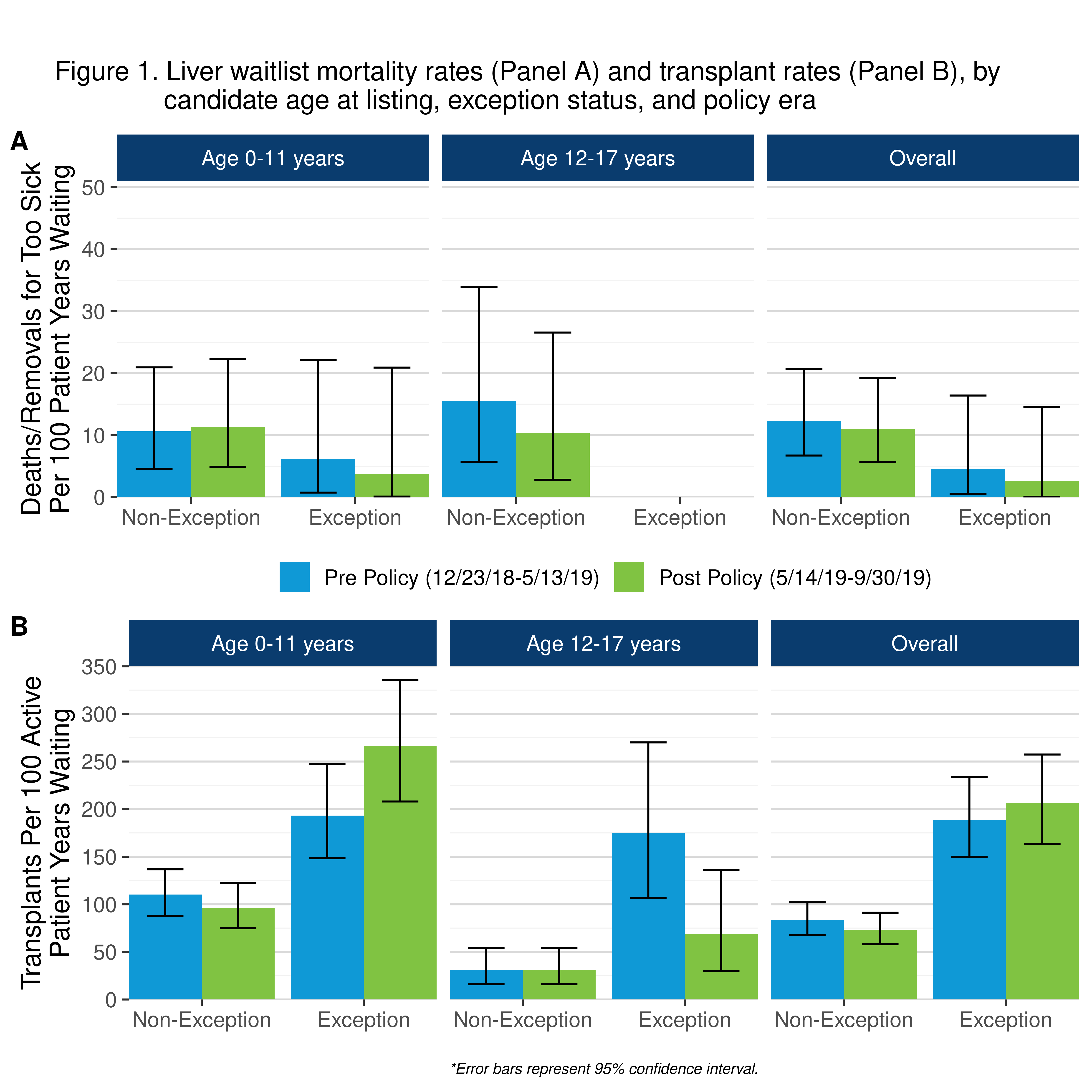Pediatric National Liver Review Board: Impact on Children on the Waitlist
1United Network for Organ Sharing, Richmond, VA, 2Seattle Children's Hospital, Seattle, WA, 3UCSF Benioff Children's Hospital, San Francisco, CA, 4Children's Hospital of Pittsburgh of UPMC, Pittsburgh, PA
Meeting: 2020 American Transplant Congress
Abstract number: 582
Keywords: Liver, Pediatric, Waiting lists
Session Information
Session Time: 3:15pm-4:45pm
 Presentation Time: 3:15pm-3:27pm
Presentation Time: 3:15pm-3:27pm
Location: Virtual
*Purpose: On 5/14/19 changes were made to the exceptions review process for pediatric liver transplant candidates, with transition from 11 Regional Review Boards to one Pediatric National Liver Review Board (NLRB). The purpose of this abstract is to provide an early look at the impact NLRB has had on pediatric liver candidates.
*Methods: Pediatric liver exception requests submitted from 5/14/19-10/31/19 were analyzed. Pediatric deceased donor liver transplants occurring 12/23/18-5/13/19 (pre-NLRB) and 5/14/19-9/30/19 (post-NLRB) were also used. Waitlist mortality and deceased donor transplant rates were assessed using pediatric waitlist registrations ever waiting during these policy eras.
*Results: Since NLRB implementation, 444 exception forms were submitted to the pediatrics specialty review board, of which 301 (67.8%) were approved. The number of pediatric deceased donor transplants decreased from 161 (75 with an exception) in the pre-NRLB time period to 137 (69 with an exception) post-NLRB. The percent of pediatric transplants with an exception increased from 44.0% (n=59) pre-NLRB to 49.6% (n=60) post-NLRB in the 0-11 year old age group and decreased from 59.3% (n=16) to 56.2% (n=9) in the 12-17 year old age group. Post-NLRB, 88.3% (n=53) transplants with an exception in the 0-11 age group had a PELD score of 35 or higher vs. 72.9% (n=43) pre-NLRB. Post-NLRB, 44.4% (n=4) transplants with an exception in the 12-17 year old age group had a MELD score of 35 or higher vs. 50% (n=8) pre-NLRB. Overall, waiting list mortality rates have remained similar for both exception and non-exception candidates (Figure 1A). Transplant rates for exception candidates have increased for the 0-11 year old age group but decreased in the 12-17 year old age group, with transplant rates remaining similar for non-exception candidates (Figure 1B).
*Conclusions: Post-NLRB, there has been a decline in the number of pediatric deceased donor liver transplants with transplant rates for exception candidates increasing for the 0-11 year old age group and decreasing for the 12-17 year old age group. As children are a vulnerable population, the impact of NLRB on pediatric liver candidates should continue to be monitored.
To cite this abstract in AMA style:
Foutz J, Noreen S, Hsu E, Perito E, Mazariegos G. Pediatric National Liver Review Board: Impact on Children on the Waitlist [abstract]. Am J Transplant. 2020; 20 (suppl 3). https://atcmeetingabstracts.com/abstract/pediatric-national-liver-review-board-impact-on-children-on-the-waitlist/. Accessed December 23, 2025.« Back to 2020 American Transplant Congress

